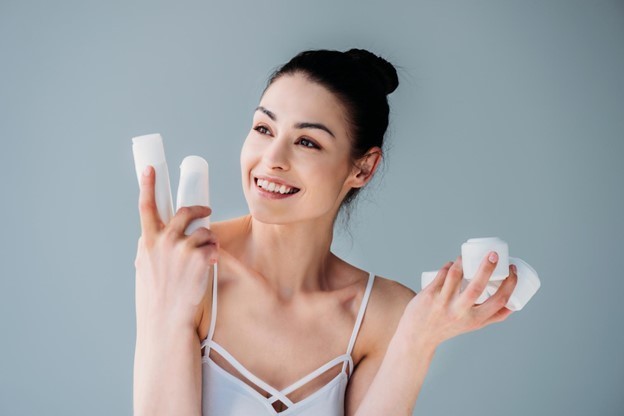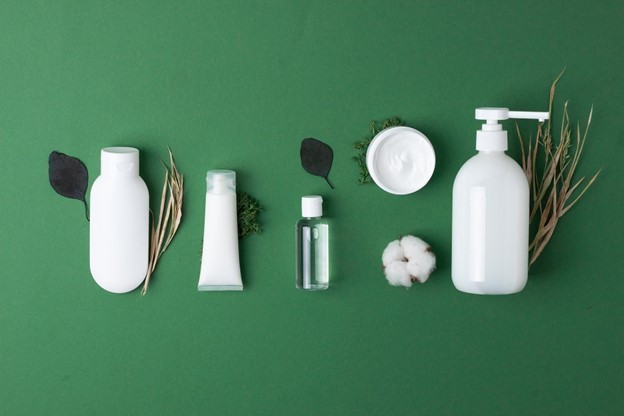views

I. Introduction
A. Importance of packaging in the skincare industry
In the highly competitive skincare industry, packaging plays a crucial role in product differentiation, shelf appeal, and overall consumer experience. Packaging not only protects and preserves the product but also communicates the brand's identity and values to potential customers. As a result, it is essential for companies to invest in innovative packaging designs and materials to create an engaging and memorable experience for consumers.
B. Consumer preferences and brand values driving packaging innovations
As consumers become more conscious of their choices, they are increasingly seeking products that align with their values and preferences. Brands are responding to this demand by focusing on packaging innovations that cater to these consumer preferences, such as sustainable materials, user-friendly designs, and aesthetically appealing visuals. This has led to a surge in creativity and experimentation within the skincare packaging industry, resulting in the emergence of new trends and best practices.
II. Best packaging for cosmetics
A. Factors to consider when choosing packaging
Product compatibility
The packaging material must be compatible with the product formulation to ensure its stability and effectiveness. This includes considering factors such as the product's viscosity, reactivity with the packaging material, and light sensitivity. Additionally, the packaging design should facilitate easy dispensing and application of the product.
Sustainability
As environmental concerns rise, consumers are increasingly seeking eco-friendly packaging solutions. Brands should prioritize sustainable materials and designs that minimize waste, encourage recycling, or promote reuse and refill systems.
Aesthetics
Packaging aesthetics play a significant role in attracting consumers and conveying the brand's identity. A visually appealing design that resonates with the target audience can set a product apart from its competitors and create a lasting impression.
Functionality
Functionality is a critical aspect of packaging design, as it ensures that the product is user-friendly and convenient to use. This may include elements such as ergonomic shapes, easy-to-open closures, and dispensing systems that provide precise product application. Incorporating these functional features can enhance the overall consumer experience and foster brand loyalty.
III. Designing cosmetic packaging
A. Identifying brand values and target audience
Before embarking on the packaging design process, it is crucial to have a clear understanding of the brand's values and target audience. This will help inform the design direction and ensure that the packaging effectively communicates the brand's unique selling points and appeals to the desired consumer demographic.
B. Popular materials and designs
Some of the most popular materials used in skincare packaging include glass, plastic, metal, paper, and biodegradable materials. Each of these materials offers unique benefits and challenges in terms of aesthetics, sustainability, and functionality. Recent trends in packaging design are focusing on minimalism, clean lines, and incorporating elements of sustainability and eco-friendliness.
III. Designing cosmetic packaging
A. Identifying brand values and target audience
Before embarking on the packaging design process, it is crucial to have a clear understanding of the brand's values and target audience. This will help inform the design direction and ensure that the packaging effectively communicates the brand's unique selling points and appeals to the desired consumer demographic.
B. The 7 basic steps to packaging design
Research and inspiration
Begin by researching the market, competitors, and current trends in the skincare packaging industry. This will provide valuable insights and inspiration for your packaging design. Collect images, color palettes, and design elements that resonate with your brand values and target audience to create a mood board.
Sketching and brainstorming
Based on your research, sketch out various packaging design concepts and ideas. Experiment with different shapes, materials, and visual elements to create a range of possible design directions. Share these sketches with your team and gather feedback to refine your ideas.
Design development
Select the most promising design concepts and develop them further, focusing on refining the details and ensuring the designs are aligned with the brand's values and objectives. Consider the functionality and sustainability aspects of each design, as well as the production feasibility and costs.
Material selection
Evaluate the different materials available and choose the most suitable option for your packaging design, considering factors such as product compatibility, sustainability, and aesthetics. Research innovative materials and technologies that could provide a competitive edge or enhance the consumer experience.
Prototyping and testing
Create physical prototypes of your packaging designs and test them for functionality, durability, and overall user experience. This step helps identify any potential issues or improvements that can be made before moving to the final design and production stages.
Finalizing design
Based on the feedback and insights gathered during the prototyping and testing phase, finalize your packaging design. Ensure that it meets all functional, aesthetic, and sustainability requirements and is aligned with your brand values and target audience preferences.
Production and quality control
Collaborate with packaging manufacturers to ensure that the production process runs smoothly and adheres to the highest quality standards. Conduct regular quality control checks throughout the production process to ensure that the final packaging meets your expectations and is consistent with your design vision.
C. Tips for creating professional-looking packaging
To create professional-looking packaging for your skincare products, consider the following tips:
Cohesive branding: Ensure that your packaging design aligns with your brand's overall visual identity, including colors, typography, and logo. Consistency across all touchpoints helps create a recognizable and memorable brand image.
High-quality materials: Choose materials that not only provide the necessary protection and functionality but also convey a sense of quality and professionalism. Investing in high-quality materials can significantly impact the perceived value of your product.
Attention to detail: Small details, such as the finish of your packaging, the texture of the materials, and the precision of your printing, can elevate the overall appearance and professionalism of your product.
User-centered design: Ensure that your packaging design considers the end-user's needs and preferences. This includes easy-to-use dispensing systems, ergonomic shapes, and clear instructions for use.
Collaborate with professionals: Engaging experienced packaging designers and manufacturers can help ensure that your packaging meets the highest standards of quality and professionalism.
IV. Plastic packaging for cosmetics

A. Common types of plastic used in cosmetics
Some of the most common types of plastic used in cosmetics packaging include:
Polyethylene (PE): Widely used for tubes, bottles, and caps, PE is known for its flexibility, durability, and chemical resistance.
Polypropylene (PP): Often used for jars, caps, and airless dispensers, PP offers excellent chemical resistance and a high melting point, making it suitable for hot-fill processes.
Polyethylene terephthalate (PET): Commonly used for bottles and jars, PET is lightweight, shatter-resistant, and provides excellent barrier properties.
B. Evaluating plastic packaging for sustainability and product compatibility
When selecting plastic packaging, it is essential to consider its environmental impact and compatibility with your product. Look for plastics that can be easily recycled, such as PET and PP, and avoid materials that contain harmful chemicals or additives. Additionally, ensure that the selected plastic is compatible with your product's formulation to avoid issues such as leaching or product degradation.
C. Innovative plastic alternatives
In response to growing concerns about plastic pollution and environmental sustainability, several innovative alternatives to traditional plastics have emerged, including:
Bioplastics: Derived from renewable sources, such as corn or sugarcane, bioplastics offer similar properties to conventional plastics but with a reduced environmental footprint.
Plant-based materials: Some packaging manufacturers are developing plant-based materials, such as bamboo or seaweed, which are biodegradable and have a lower environmental impact.
Recycled materials: Using post-consumer recycled (PCR) plastic can help reduce waste and support a circular economy.
V. Most popular skincare packaging
A. Trends in packaging design and materials
Current trends in skincare packaging design and materials include minimalism, eco-friendly materials, and innovative dispensing systems. Brands are increasingly prioritizing sustainability and are incorporating recycled, biodegradable, or compostable materials into their packaging.
B. Iconic packaging examples and their success factors
Some iconic examples of skincare packaging include Glossier's minimalist and Instagram-worthy designs, Aesop's apothecary-inspired amber glass bottles, and Lush's packaging-free "naked" products. These brands have successfully differentiated themselves through their unique and memorable packaging, which has resonated with their target audience and contributed to their overall success.
VI. Eco-friendly and sustainable cosmetic packaging
A. Definition and importance of sustainable packaging
Sustainable packaging refers to packaging designs and materials that minimize their environmental impact throughout their lifecycle, from production to disposal. This includes considerations such as energy use, waste generation, and the use of renewable resources. Sustainable packaging is increasingly important as consumers become more environmentally conscious and demand products that align with their values. Brands that prioritize sustainability can not only appeal to these consumers but also contribute to a more responsible and eco-friendly industry.
B. Most sustainable beauty packaging materials
Biodegradable and compostable materials
Biodegradable and compostable materials, such as PLA (polylactic acid) derived from plant sources, can break down naturally in the environment, reducing waste and pollution. These materials are particularly suitable for single-use or disposable packaging components.
Recyclable materials
Using recyclable materials, such as glass, aluminum, or certain types of plastic (e.g., PET and PP), can help support a circular economy and reduce waste. Brands should clearly communicate recycling instructions to consumers and consider implementing recycling programs to facilitate proper disposal.
Reusable and refillable packaging
Reusable and refillable packaging systems encourage consumers to reduce waste by reusing the same packaging multiple times. This can be achieved through the use of durable materials, such as glass or metal, and offering refill options for products. Brands like L'Occitane and Kjaer Weis have successfully implemented refillable packaging systems, appealing to environmentally conscious consumers while promoting brand loyalty.
VI. Eco-friendly and sustainable cosmetic packaging
A. Definition and importance of sustainable packaging
Sustainable packaging refers to packaging designs and materials that minimize their environmental impact throughout their lifecycle, from production to disposal. This includes considerations such as energy use, waste generation, and the use of renewable resources. Sustainable packaging is increasingly important as consumers become more environmentally conscious and demand products that align with their values. Brands that prioritize sustainability can not only appeal to these consumers but also contribute to a more responsible and eco-friendly industry.
B. Most sustainable beauty packaging materials
Biodegradable and compostable materials
Biodegradable and compostable materials, such as PLA (polylactic acid) derived from plant sources, can break down naturally in the environment, reducing waste and pollution. These materials are particularly suitable for single-use or disposable packaging components.
Recyclable materials
Using recyclable materials, such as glass, aluminum, or certain types of plastic (e.g., PET and PP), can help support a circular economy and reduce waste. Brands should clearly communicate recycling instructions to consumers and consider implementing recycling programs to facilitate proper disposal.
Reusable and refillable packaging
Reusable and refillable packaging systems encourage consumers to reduce waste by reusing the same packaging multiple times. This can be achieved through the use of durable materials, such as glass or metal, and offering refill options for products. Brands like L'Occitane and Kjaer Weis have successfully implemented refillable packaging systems, appealing to environmentally conscious consumers while promoting brand loyalty.
C. Brands leading the way in sustainability
Several skincare brands have made significant strides in incorporating sustainable packaging solutions into their product offerings. Examples include:
Aveda: Aveda utilizes post-consumer recycled (PCR) materials in its packaging, reducing waste and supporting a circular economy.
The Body Shop: The Body Shop offers a range of refillable products and is committed to reducing plastic waste across its packaging portfolio.
REN Clean Skincare: REN uses PCR materials, recyclable packaging, and has implemented a "zero waste by 2021" pledge.
VII. Luxury packaging for skincare products
A. Key elements of luxury packaging
Luxury packaging often incorporates several key elements to create a sense of exclusivity and sophistication. These elements may include:
High-quality materials: Luxury packaging often uses premium materials such as glass, metal, or high-grade plastics to convey a sense of quality and durability.
Attention to detail: Precision in printing, finishing, and assembly can elevate the overall appearance of the packaging and enhance the user experience.
Unique design elements: Innovative shapes, textures, and embellishments can help differentiate luxury packaging from its competitors and create a memorable unboxing experience.
B. Examples of successful luxury packaging designs
Successful luxury skincare packaging designs include:
La Mer: La Mer's iconic packaging features frosted glass jars and minimalist design elements, creating a sense of exclusivity and understated elegance.
La Prairie: La Prairie utilizes sleek, metallic packaging and unique shapes to convey a sense of innovation and luxury.
SK-II: SK-II's packaging features clean lines, bold typography, and a focus on product transparency, creating a sense of sophistication and simplicity.
C. Striking a balance between luxury and sustainability
As the demand for sustainable packaging grows, luxury skincare brands must find ways to balance their commitment to luxury with their environmental responsibilities. This can be achieved by:
Incorporating sustainable materials: Luxury brands can explore the use of sustainable materials, such as recycled glass or metal, without compromising on quality or appearance.
Reducing unnecessary packaging components: Brands can simplify their packaging design and eliminate unnecessary components to reduce waste and minimize their environmental impact.
Implementing reusable or refillable systems: Luxury brands can develop reusable or refillable packaging systems that maintain their premium aesthetic while promoting a more sustainable approach to consumption.
Collaborating with eco-conscious suppliers: By partnering with suppliers who prioritize sustainability and follow eco-friendly production practices, luxury skincare brands can ensure that their packaging aligns with their environmental values.
Educating consumers: Luxury brands should communicate their sustainability efforts and educate consumers about proper disposal, recycling, or refilling options, encouraging responsible consumption and waste reduction.
VIII. The 5 types of packaging material for cosmetics
A. Glass
Glass is a popular choice for cosmetic packaging due to its premium look and feel, excellent barrier properties, and recyclability. It is widely used for bottles, jars, and vials, and is particularly suitable for luxury skincare products. However, its weight and potential for breakage can be drawbacks, making it less suitable for some applications.
B. Plastic
Plastics, such as polyethylene (PE), polypropylene (PP), and polyethylene terephthalate (PET), are widely used in cosmetic packaging due to their versatility, lightweight nature, and affordability. Plastic packaging can be molded into various shapes and sizes, making it suitable for a range of products. However, concerns about plastic pollution and sustainability have led to increased scrutiny of plastic packaging and a push for more eco-friendly alternatives.
C. Metal
Metal packaging, such as aluminum or tin, offers a durable and high-end option for skincare packaging. Metal containers provide excellent barrier properties and can be easily recycled. They are often used for tubes, compacts, and certain types of dispensers. However, metal packaging can be more expensive than other materials and may not be suitable for all products due to compatibility issues.
D. Paper and cardboard
Paper and cardboard packaging materials, such as folding cartons or rigid boxes, are commonly used for secondary packaging in the cosmetics industry. They offer numerous design possibilities, can be easily printed upon, and are often more eco-friendly than plastic alternatives. However, paper and cardboard packaging may not provide the same level of protection or barrier properties as other materials, and may not be suitable for direct contact with certain products.
E. Biodegradable materials
Biodegradable materials, such as PLA (polylactic acid) or plant-based alternatives, are gaining popularity as eco-friendly alternatives to traditional plastics. These materials can break down naturally in the environment, reducing waste and pollution. However, biodegradable materials may not be suitable for all applications, and their adoption may require changes in manufacturing processes or supply chains.
IX. Color psychology in cosmetic packaging
A. Importance of color in packaging design
Color is a powerful tool in packaging design, as it can evoke emotions, convey brand identity, and attract attention. The use of color in cosmetic packaging can impact consumer perception of a product's quality, effectiveness, and target audience, making it a critical consideration in the design process.
B. Choosing the best color for cosmetic packaging
To choose the best color for cosmetic packaging, consider the following factors:
Brand identity: Ensure that your packaging color aligns with your overall brand identity and visual language.
Target audience: Consider the preferences and expectations of your target audience when selecting colors, as different colors may resonate with different demographics.
Product positioning: Your packaging color should reflect your product's positioning, whether it's a luxury, eco-friendly, or affordable product.
Psychological associations: Different colors can evoke different emotions and associations. For example, blue may convey trust and reliability, while green may signal eco-friendliness or natural ingredients.
C. Examples of successful color choices in the industry
Some successful examples of color choices in the cosmetic packaging industry include:
Glossier: Glossier's signature millennial pink packaging has become synonymous with the brand, conveying a sense of femininity, playfulness, and modernity.
Aesop: Aesop's packaging often features subdued, earthy tones, reflecting the brand's focus on natural ingredients and minimalistic design.
Clinique: Clinique's use of clean, crisp white packaging with splashes of color creates a sense of clinical effectiveness and purity, aligning with the brand's positioning as a dermatologist-developed skincare line.
X. Ideal packaging materials
A. Criteria for determining the most ideal packaging material
When selecting the ideal packaging material for skincare products, several factors should be considered:
Compatibility: The packaging material should be compatible with the product formulation, ensuring that it does not react with or compromise the product's efficacy or shelf life.
Sustainability: Brands should prioritize environmentally friendly materials that can be recycled, reused, or biodegraded to minimize waste and pollution.
Cost-effectiveness: The packaging material should be cost-effective without sacrificing quality, ensuring that it aligns with the brand's budget and pricing strategy.
Aesthetics and design possibilities: The material should offer design flexibility and contribute to the overall visual appeal of the packaging, helping the product stand out on the shelf.
Functionality: The packaging material should be functional, protecting the product from damage, leakage, or contamination while also being user-friendly for consumers.
B. Pros and cons of common packaging materials
Each packaging material comes with its own set of advantages and disadvantages:
Glass: While glass offers a premium appearance and excellent barrier properties, it is heavy and prone to breakage, making it less suitable for some applications.
Plastic: Plastics are versatile, lightweight, and affordable but may raise concerns about sustainability and plastic pollution.
Metal: Metal packaging provides durability and a high-end look but can be more expensive than other materials and may not be compatible with all products.
Paper and cardboard: These materials are often more eco-friendly and offer numerous design possibilities but may not provide the same level of protection or barrier properties as other materials.
Biodegradable materials: Biodegradable materials are environmentally friendly alternatives to traditional plastics but may have limitations in terms of applications and require changes in manufacturing processes or supply chains.
C. Innovative materials that offer promising alternatives
Innovative packaging materials are being developed to address the limitations of traditional materials and better align with evolving consumer preferences and values:
Plant-based plastics: These biodegradable plastics are derived from renewable resources like cornstarch, offering an eco-friendly alternative to petroleum-based plastics.
Mushroom-based packaging: This biodegradable material is made from the root structure of mushrooms and can be molded into various shapes, providing a sustainable alternative to foam or plastic packaging.
Edible packaging: Made from food-grade materials, edible packaging can be consumed or composted, reducing waste and pollution.
XI. Conclusion
A. Recap of packaging innovations and trends
Throughout this article, we have explored the latest trends in packaging design and materials for skincare products, highlighting the importance of factors such as sustainability, consumer preferences, brand values, and functionality. We've discussed various packaging materials and their pros and cons, as well as innovative alternatives that offer promising solutions for the future.
B. The future of packaging in the skincare industry
As the skincare industry continues to evolve, packaging will play an increasingly important role in product success and consumer satisfaction. Brands must stay informed about the latest trends, materials, and technologies to create packaging solutions that not only protect and preserve their products but also resonate with their target audience and align with their values.
In the future, we can expect to see even more focus on sustainable and eco-friendly packaging, as well as innovative materials and design approaches that cater to the ever-changing needs and preferences of consumers. By embracing these trends and prioritizing responsible packaging choices, skincare brands can contribute to a more sustainable and successful industry.


























Comments
0 comment